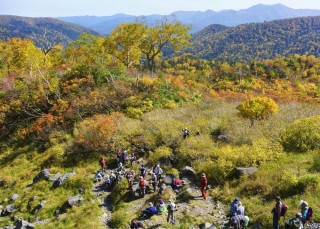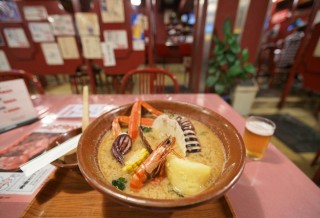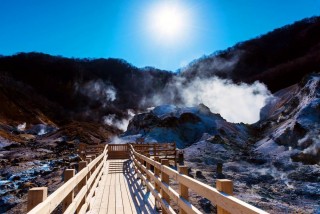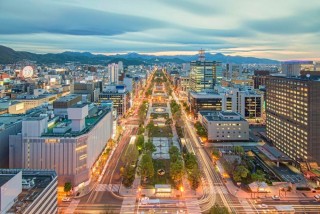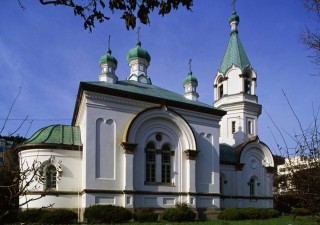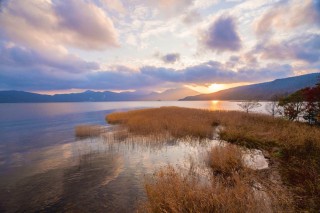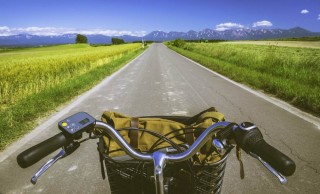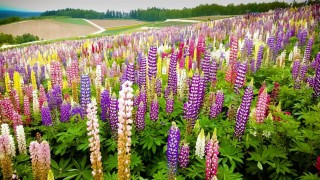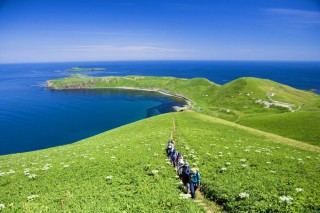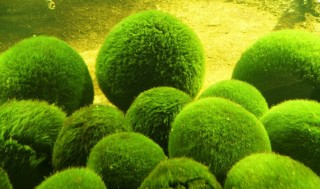Loading
Search
▼ When The Snow Stops Falling: The Lesser-Known Pleasures of Hokkaidō
- Category:Tourism
For most people, Hokkaidō is synonymous with snow and skiing, but Japan’s northernmost island is also a top destination in the warmer months: it’s a place to stretch your legs on epic hikes, train your eyes on distant horizons, indulge in world-class seafood, or just escape from the hot humidity of cities further south.
In the past two decades, resorts like Niseko have made their way onto the shortlist of top ski and snowboarding destinations in Asia thanks to the presence of consistent, world-class powder. Yet this emphasis sells the rest of the island short: there’s plenty to enjoy when the snow isn’t falling, and now, with the new Hokkaidō shinkansen (bullet train) connecting Tokyo to the southern port of Hakodate, getting there has never been easier.
Here are a few reasons why Hokkaidō should make it on to your travel hit list at any time of year.
Fresh seafood
It’s easy to eat well in Hokkaidō thanks to the island’s fantastic seafood. In summer, the specialities are rich, creamy uni (sea urchin roe) from the west coast and glistening squid pulled from the chilly Tsugaru Strait; come autumn, its kingly maguro (tuna) and gem-like ikura (salmon roe). There are enough varieties of crab to keep crab shacks going all year, which brings us to another point: in Hokkaidō, you can eat your seafood in luxurious ryokan (traditional inns) or right from the source at one of the island’s fish markets.
Wilderness treks
Hokkaidō has far and away more national park land than anywhere else in Japan and over 10 per cent of the island is protected space. Daisetsuzan National Park, Japan’s largest, is the natural destination for travellers wanting to get away: it’s a true wilderness with large swathes that remain virtually unvisited, save for the hardy souls who embark on multi-day treks and the Hokkaidō deer, brown bears, red squirrels and northern foxes that live here.
Smouldering onsen
All those spiky mountains and caldera lakes mean one thing: this island has plenty of volcanic activity and thus plenty of steaming onsen (natural hot springs). There are famous ones, like the sulphur-laced hell pools of Noboribetsu (which you can smell from miles away); there are also plenty of small, hidden pools accessible only by walking trails (and there is nothing better after a day of hiking than ending up at an onsen). Hokkaidō not warm enough for laying on the beach? Try a seaside hot spring instead.
City life
Hokkaidō may be largely rural but it still has city life covered: Sapporo is Japan’s fifth largest city. It’s a youthful metropolis that draws doers and dreamers with its slower pace, lack of entrenched hierarchies and lively after-dark scene – exactly what you’d expect from the home of Sapporo beer. You can take a tour of the original factory, now the Sapporo Beer Garden & Museum, or the current, state-of-the-art plant, Hokkaidō Brewery. Sapporo also hosts a month-long, outdoor summer beer festival, which is just as fun as it sounds.
Historic ports
The opening of the new shinkansen station in Hakodate doesn’t mark the first time the city has been an important point of entry: it was one of the first two ports opened to international trade in the 19th century, making it an unlikely cosmopolitan outpost. The legacy of this remains today in the old Motomachi district where churches and villas in various European styles rub shoulders with traditional (and contemporary) Japanese structures. There’s a wonderfully retro cable car that runs through the city centre as well.
Ainu culture
The Ainu were the original settlers of Japan’s far north (in fact, Hokkaidō has only officially been part of Japan since 1898). Few communities remain, but among them are those working hard to preserve and share their heritage. Akan National Park is home to one of the largest Ainu villages; here you can sample dishes made from venison and pukusa (a kind of wild garlic) and see performances of traditional dance and theatre.
A cyclist's paradise
Light traffic and cooler days make Hokkaidō a magnet for cyclists. Riding atop two wheels is the best way to take in the island’s many spectacular caldera lakes – or you can strike out towards the largely wild eastern side. Hokkaidō makes things easy for cyclists: bicycles are allowed on trains and campgrounds are plentiful. There is also a network of ‘riders’ houses’ – cheap, social lodgings for cyclists and motorcyclists.
Fertile fields
Remote islands
Hokkaidō may seem remote coming from Tokyo, but even more remote destinations lie just to the west of its northernmost tip: Rishiri-tō and Rebun-tō. These two islands, which mark the point where Japanese seas give way to Russian ones, are only accessible by boat (and only habitable in the warmer months). This too is national park land and there are hiking and hot springs to enjoy along with vistas of the wild northern seas.
Mysterious marimo
Don’t worry, Hokkaidō’s got cute covered too, naturally: marimo are velvety green balls of algae that grow ever so slowly (about half a centimetre a year) in only a few lakes around the world. A protected species and a national treasure, marimo also look like something that would come to live in a Studio Ghibli movie.
By Rebecca Milner
- January 20, 2017
- Comment (0)
- Trackback(0)


